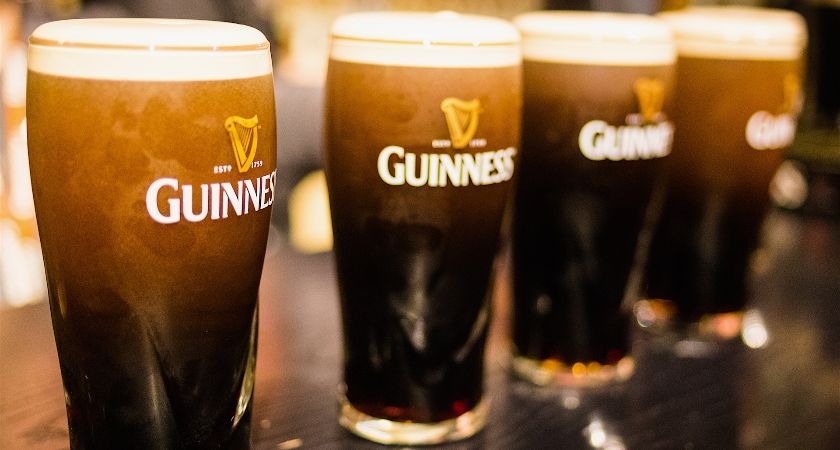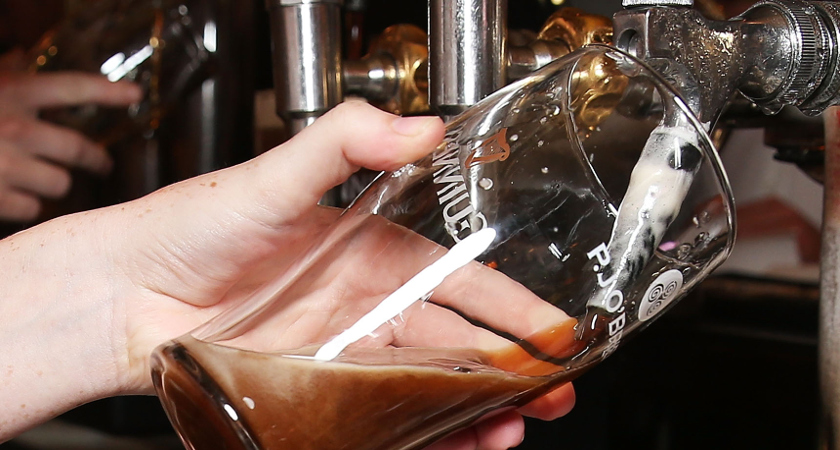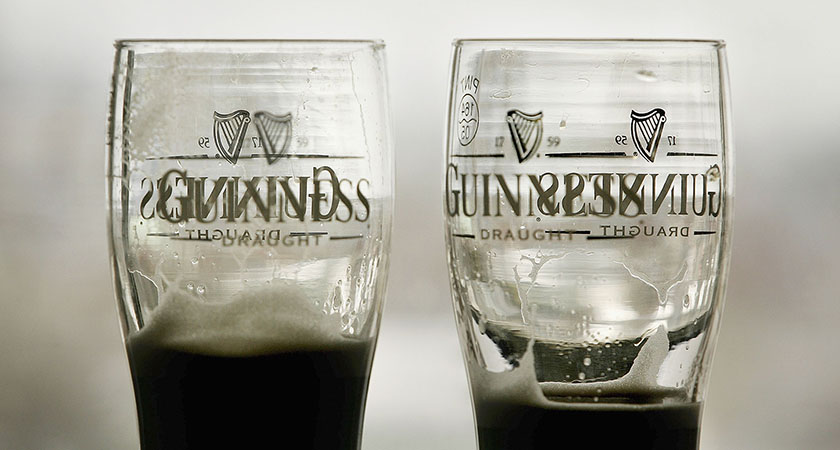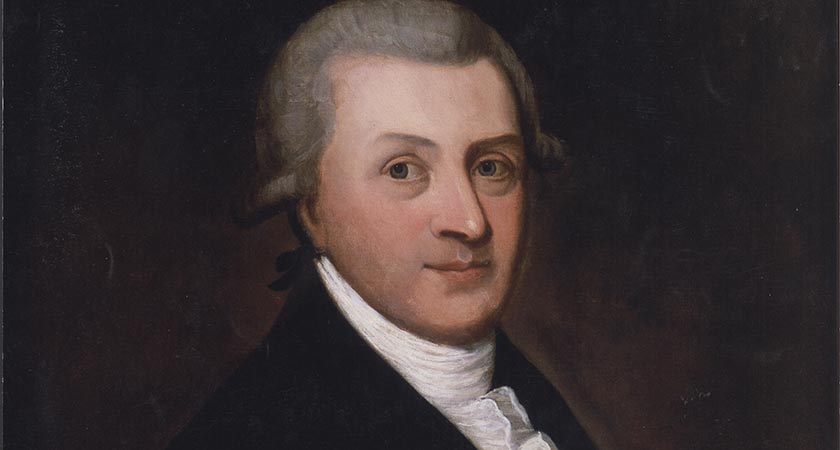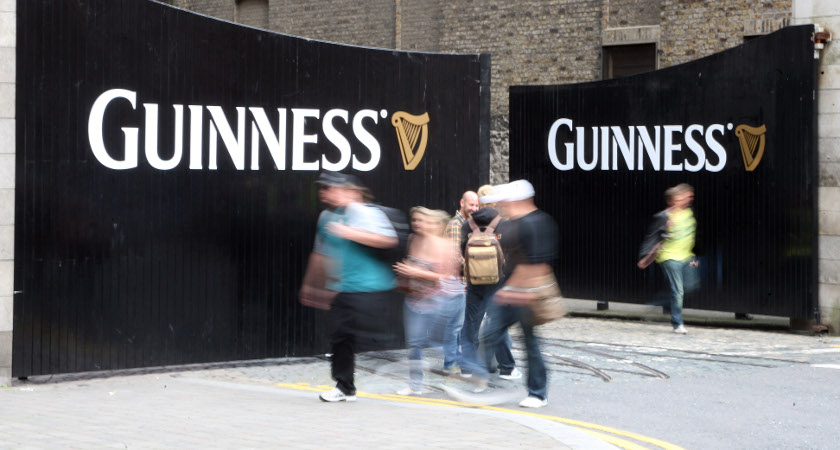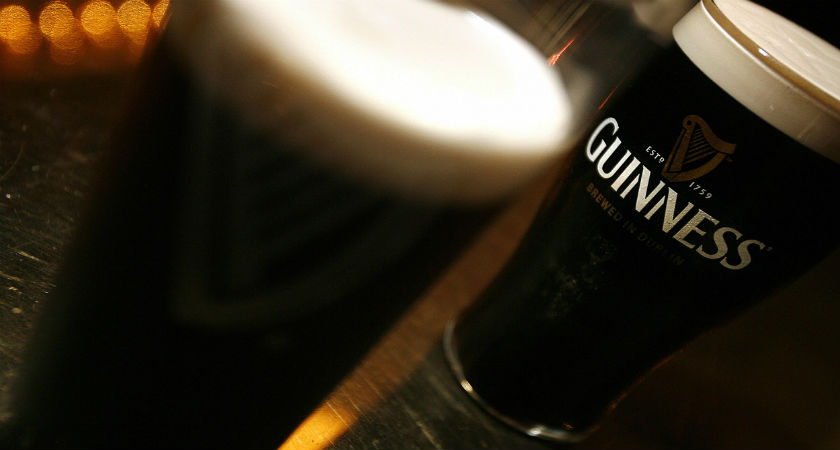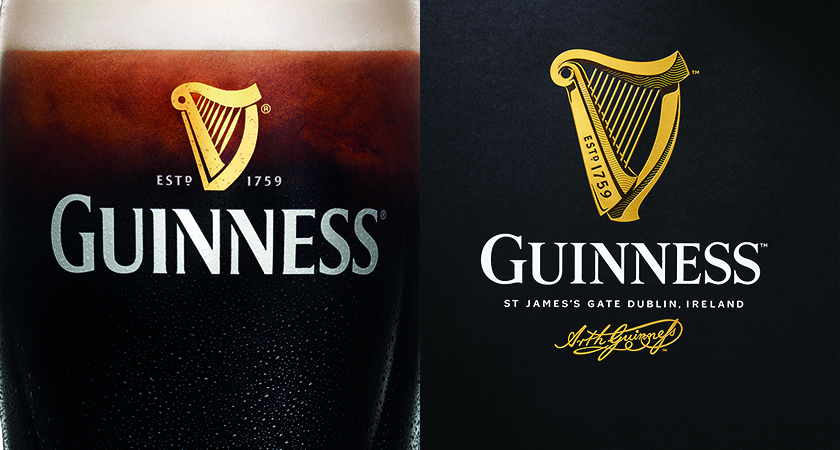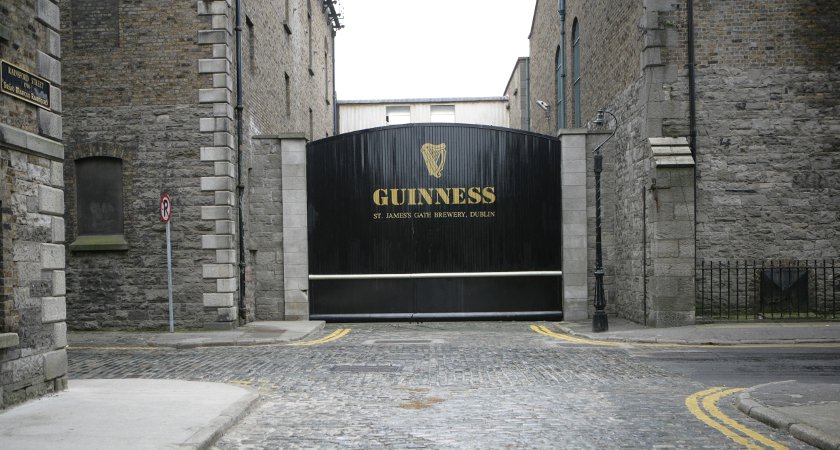There are few more iconic symbols of Ireland than a pint of the 'Black Stuff' - but it might surpise you to learn that Guinness is not in fact... black.
The famous Irish stout may well be your favourite beer (if you're smart), but how much do you really know about the brand?
Here are 9 facts about Guinness you probably never knew...
1. It's not actually black
Guinness. Is. Not. Black. Although commonly known as the 'Black Stuff', in truth Guinness is actually an extremely deep ruby red.
Seriously. Go hold a pint up to a light - you’ll see the truth.
The deep crimson hue is a result of all the roasted barley in Guinness' recipe. The head is still white though... we think.
2. You've probably never had a perfect pint
Good things come to those who... you know the rest - but it's true!
According to Guinness' owners Diageo, the perfect pint of Draught Guinness takes exactly 119.53 seconds to pour (with a pause inbetween, obviously) and the glass should be placed at 45 degrees with the liquid hitting the side with the harp logo first.
Unless your local pub is extremely scientific in its approach, it's likely you've never had a PERFECT Guinness. How sad.
3. It's a phenomenon in Africa
Guinness is drunk in an impressive 150 countries, and 40% of all consumption comes from Africa alone - with Nigeria its second-largest market in the world.
Britain is first (fair play lads), Ireland comes a disappointing third, and Cameroon comes in fourth ahead of the US in measly fifth place.
Overall, Guinness operates six breweries worldwide - St James' Gate in Dublin, four others in Nigeria, Malaysia, Ghana and Cameroon, and a new 62-acre site set to open in Baltimore in the US this summer.
4. It was never supposed to be sold
Guinness' founder Arthur Guinness, born to a family of brewers in 1725, started off his career aged 35 brewing ale - not stout.
But by chance, a dark beer from London – called Porter – was becoming increasingly popular in Dublin at that time.
Arthur refused to miss out on the growing craze and decided to focus all his efforts on perfecting his dark beer.
5. It'll be around for a few millennia yet
Arthur signed the lease for the Guinness brewery at St James' Gate, Dublin on December 31, 1759 - and it's fair to say he was confident in the brand.
The lease runs for 9,000 years — so Ireland's national drink will be around for 8,741 more years yet!
The original lease is on display at the Guinness Storehouse exhibition tagged on to the brewery – and was a massive steal for Arthur at just £45 per year.
6. It's all about the nitrogen
That pause in between pours is essential to forming the head on top of a pint o' Guinness.
The stout's chemical formula is unusually low in carbon dioxide - with nitrogen much more prevelant.
Nitrogen bubbles rise to the top of the drink during the pause and come together to form that creamy layer of white.
7. Its harp is different to the Republic of Ireland harp
The straight edge always appears to the left on the trademarked Guinness harp – whereas it’s the opposite way round for the Irish State.
The symbol was modeled after the Trinity College harp - Guinness just flipped the instrument horizontally and called it their own.
Guinness' harp - which has evolved six times since its introduction - wasn't actually introduced until 1862 and was trademarked 14 years later.
8. They've been a great bunch of lads over the years
In the 1920s, Guinness employees were guaranteed access to medical and dental care, education scholarships and a pension.
Workers are even believed to have been allowed to sample their product throughout the day. The good old days, eh?
The company also promised every soldier in World War II that they would have a bottle of Guinness waiting for them on Christmas Day. Aw.
9. It’s actually quite good for you – and has gone vegan
The brewer was told to stop using its old advertising slogan - ‘Guinness is good for you’ – years ago. But research suggests Guinness could actually help prevent heart clots - which couldn't be said for lager.
A common misconception is that Guinness is a ‘heavy’ drink and therefore full of calories. In fact, a pint contains around 200 calories – which is actually less than other lagers, and even less than a pint of orange juice (220 cal)!
Throughout its 256-year history, Guinness has used a small amount of isinglass – which comes from fish bladders – as a clarification agent. However, from 2016, the company has operated a new vegan-friendly filtration plant.
Some people even reckon Guinness is good for washing your hair, though we recommend shampoo instead.

